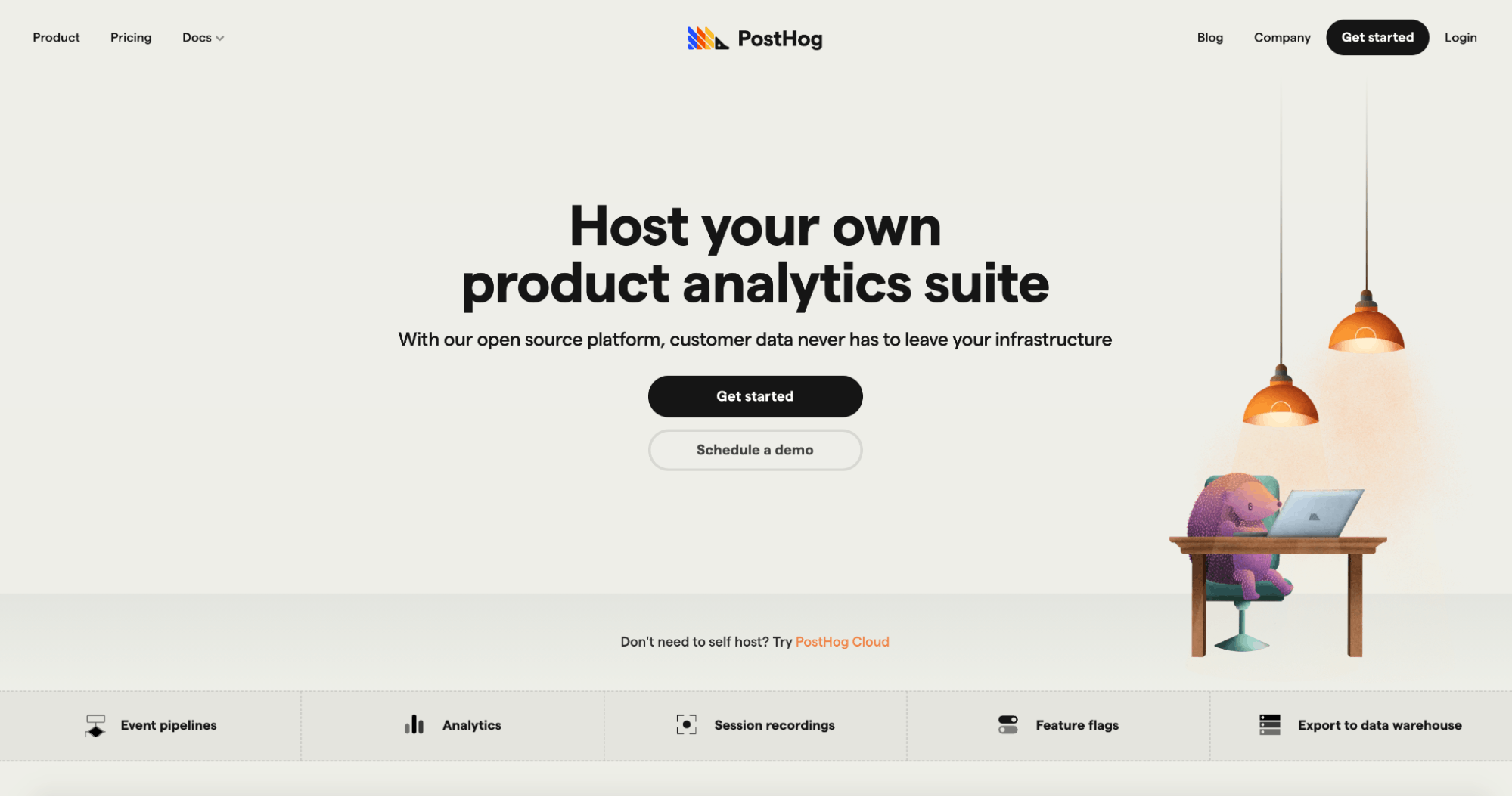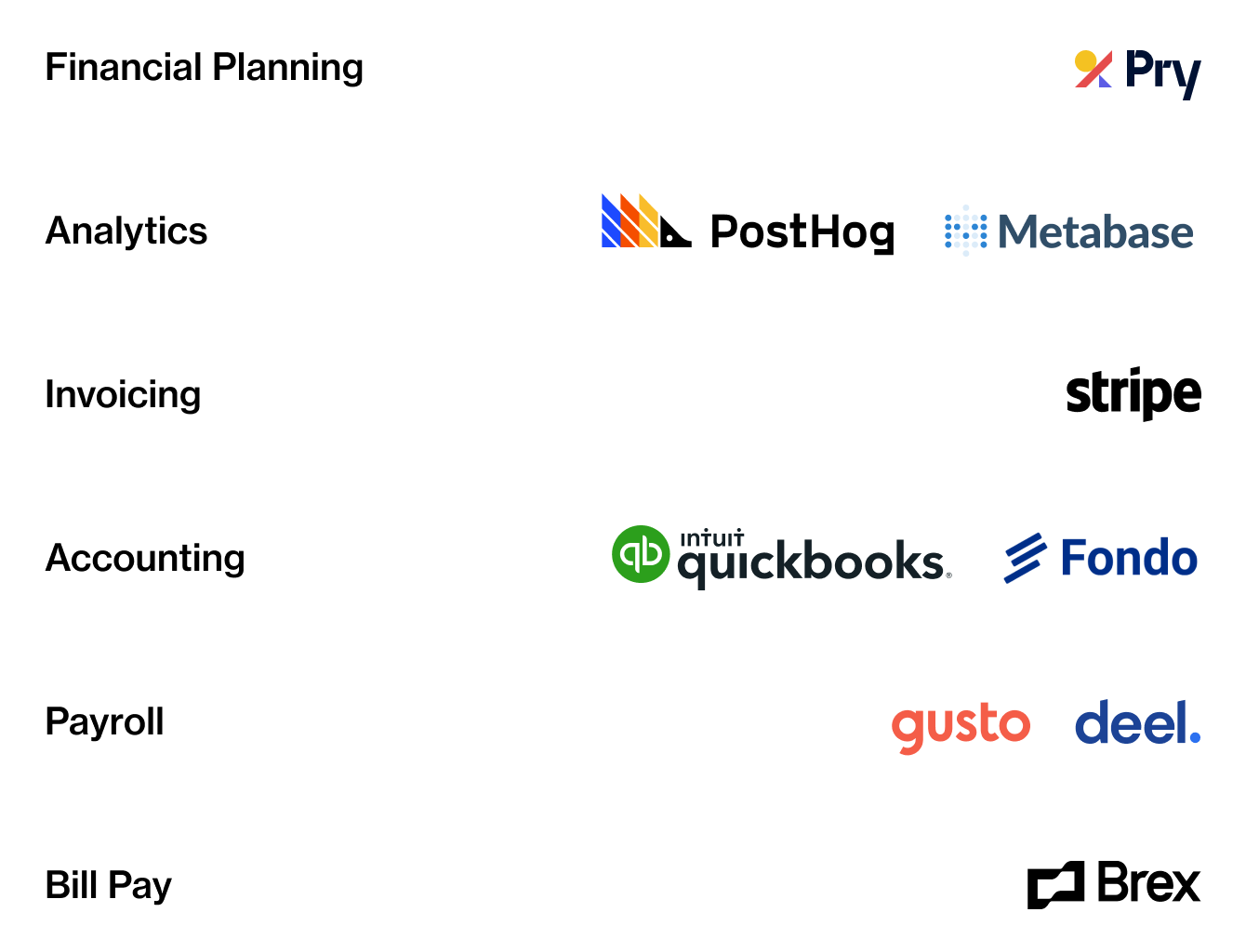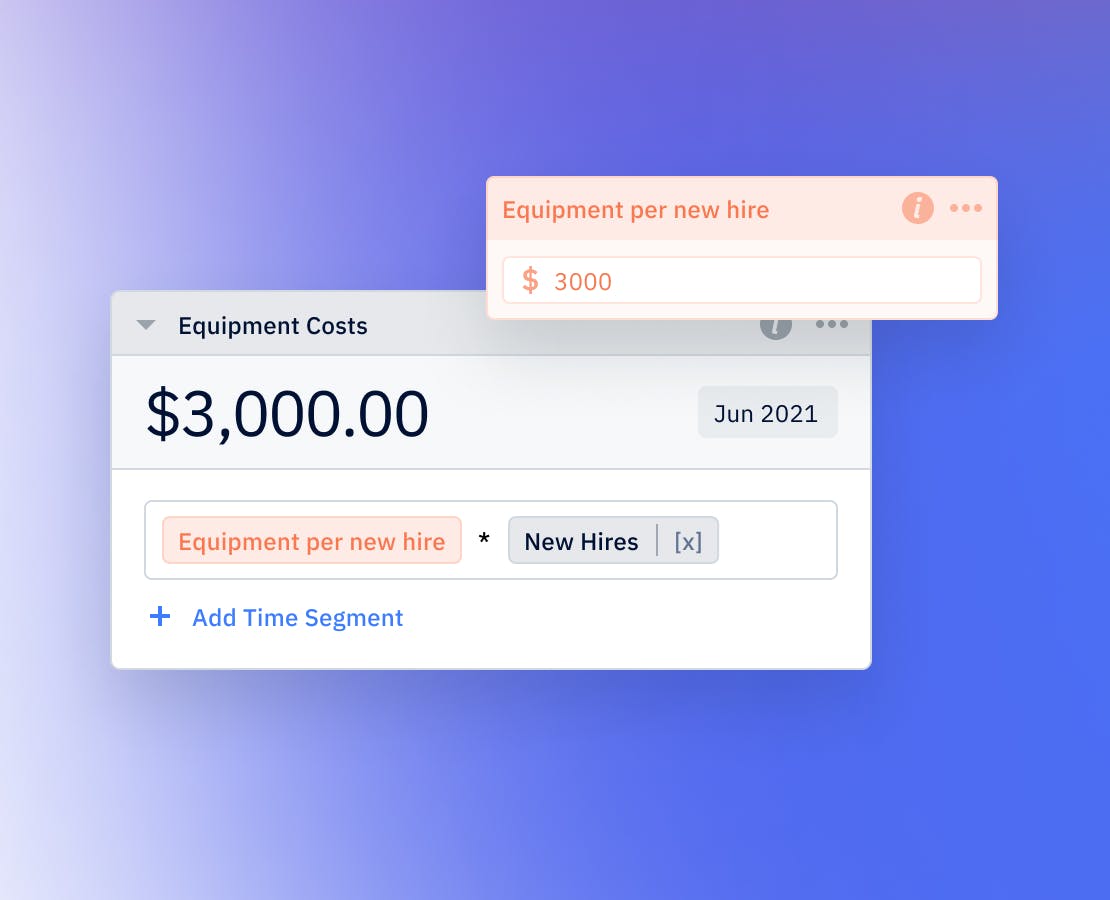How a 25+ Person Startup Expanding Globally Built a Customizable Hiring Plan in Seconds
PostHog: open-source platform for product analytics
James Hawkins (CEO) and Tim Glaser (CTO), co-founders at PostHog, wrote their first line of code on January 2nd, 2020. Since then, they went through YCombinator (Winter 2020), grew their team to 25 people, expanded to 15 different countries, and raised two major funding rounds, including $15M in a June 2021 Series B.
PostHog is an open-source platform for product analytics with a mission to increase the number of successful products in the world. For the next couple of years, PostHog will cater to companies who want full control of their product-analytics data, even as this data helps them hone their products and succeed with customers.
What does full control of data entail? Rather than allowing data to be vacuumed up by traditional product-analytics vendors, companies can use PostHog to self-host data or to lay the groundwork for self-hosting in the future.

Who manages the finances at PostHog?

Today, PostHog CEO James Hawkins and Charles Cook, the VP of Operations, are power users of Pry. As the CEO, James manages company fundraising and runs board meetings. Charles oversees company operations and reviews company finances every month. Because of their complementary roles, their collaboration on finances must be seamless.
Even small miscommunications or discrepancies create a real risk of wasting time or money.
PostHog’s finance stack

Financial Planning: Pry
Analytics: PostHog (internal analytics) | Metabase (growth tracking)
Invoicing: Stripe
Accounting: QuickBooks Online | Fondo
Bill Pay: Brex
Before Pry: outdated data, lack of visibility
Before Pry, as is the case at many startups, all of the financial planning was done ad-hoc on spreadsheets. As they managed the spreadsheets, the two execs would do their best not to step on each others’ toes, and keep the financial data fresh. But, in the pressure-cooker of scaling PostHog, they weren’t always successful.
Data became stale as it was only updated once every few weeks (sometimes, data would be months out of date). As a result, crucial calculations like salary totals were sometimes inaccurate. More worryingly, the rat’s nest of spreadsheets meant it was very easy to make inadvertent mistakes, which could affect their insight into the company’s runway.
The spreadsheets’ complexity grew over time, and other team members could not decipher the essentials. As Posthog grew, it became more and more obvious to James that they needed a more automated and accurate tool.
After Pry: experiencing clarity and control
After Pry, everything became crystal clear and it was easy to make and track changes. In minutes, CEO James Hawkins or his VP Ops could easily adjust different drivers and assumptions — for example, the cost of equipment or vendors — and see the impact to the business in real-time.
After only a few weeks, even amid PostHog’s breakneck pace of growth, it was clear how the tool was paying for itself, says James. It wasn’t just the avoidance of mistakes, but also the time saved in wrangling spreadsheet documents and tabs.
“We're saving a lot of hours and resources every month with Pry,” says PostHog CEO James Hawkins. “It's way more powerful and slicker than a spreadsheet."
Pry in action: fundraising and preparing for board meetings
Those were the tactical dimensions of Pry’s impact: cleaning up the mess created by spreadsheets, boosting the quality of communication on finances, and speeding up financial planning while eliminating mistakes.
But Pry has a strategic role to play as well: CEO James Hawkins is also interested in being able to plan forward.
He uses Pry often when he's considering fundraising decisions or when he's preparing for board meetings. When considering questions like "how many people should we hire?" or "what's the impact of decision X or Y on our runway?" In all these scenarios, Pry makes it very easy to find the answers.
“We even use Pry in our exec meetings,” adds Hawkins. “Our small team will log in to look at our metrics in real-time. It’s easy enough to add potential hires like six extra engineers or two execs with big salaries. Pry might tell us that actually makes no difference whatsoever to our runway. So we should obviously hire them. We can make the decision quickly, and move on.”
With Pry, James always knows their revenue, burn, and runway. Pry can be quick and simple as a look-up tool, or get granular and comprehensive if he needs to drill down to the details.
Pry in action: dynamic modeling of headcount expenses
That said, James’s favorite use case is being able to model out different second-order expenses that will result from headcount increases in the hiring plan. Payroll expense is a top cost at PostHog, as it is at most companies.
Not to mention, as founders know too well, when it comes to planning for new hires, budgeting means more than accounting for gross wages. There are costs tied to employee benefits, programs, and equipment.
Before Pry, it wasn’t always clear how much to budget for each hire.
“For example, the amount that we spend on IT equipment goes up with the number of people we have,” says James. “So it’s cool being able to treat all the different items like variable costs, and then build functions on top of them.”
With these functions, James can tweak and adjust specific costs tied to headcount growth, including equipment expenses, and see the result of each cost scenario. And, when things change, he can adjust a disaggregated, individual cost-driver on its own, rather than revise the entire employee-cost calculation.

Suddenly, per-hire costs are immediately accessible and modelable at the click of a few buttons.
The Pry difference: a CEO with clear sight-lines into finances
For PostHog CEO James Hawkins, the Pry experience means freedom: from the opacity of messy spreadsheets, and from that nagging feeling that financial planning is in disorder.
Despite not having a background in accounting or corporate finance, James feels he has a strong handle on his company’s finances.
"It just means that we have a good feeling of being in control of our spending,” he says. “And it’s relatively straightforward to me, as a founder.”
At Pry, we’re excited to support innovative companies like PostHog, which is devoted to its mission of providing companies with a new experience in product analytics. If you’re a startup founder who wants a better and simpler way to plan for your hires, we’d love for you to try Pry out.
.jpg?ixlib=gatsbyFP&auto=compress%2Cformat&fit=max&lossless=true&max-w=1280&q=65)
